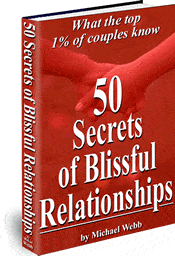Mastering Conflict Resolution in Relationships
Mastering Conflict Resolution in Relationships
Conflict is an inherent part of human interaction, and it arises from a variety of sources. As we navigate our relationships, whether personal or professional, we often encounter differing opinions, values, and needs. These differences can lead to misunderstandings and disagreements, which, if not addressed properly, can escalate into more significant issues.
By recognizing that conflict is a natural occurrence, we can begin to approach it with a mindset geared toward resolution rather than avoidance. Understanding the nature of conflict allows us to see it not merely as a negative experience but as an opportunity for growth and deeper connection. Moreover, conflict can serve as a catalyst for change.
When we confront disagreements, we are often forced to examine our own beliefs and assumptions. This introspection can lead to personal development and improved relationships. By acknowledging that conflict is not inherently destructive, we can shift our perspective to view it as a chance to learn about ourselves and others.
This understanding lays the groundwork for more constructive approaches to resolving disputes, fostering an environment where open dialogue and collaboration can flourish. Check This Out: https://lovequestforever.com
Key Takeaways
- Conflict is a natural part of human interaction and can arise from differences in values, beliefs, and needs.
- Recognizing triggers and patterns can help in understanding the root causes of conflicts and finding effective solutions.
- Effective communication involves active listening, assertiveness, and the ability to express thoughts and feelings clearly.
- Practicing empathy and active listening can help in understanding the perspectives of others and finding common ground.
- Managing emotions and reactions is crucial in resolving conflicts constructively and preventing escalation.
Identifying Triggers and Patterns
To effectively manage conflict, we must first identify the triggers that lead to disagreements. These triggers can be specific words, actions, or situations that provoke strong emotional responses in us. By reflecting on our past experiences, we can begin to recognize these patterns and understand what tends to set off our conflicts.
This self-awareness is crucial; it allows us to anticipate potential conflicts before they escalate and equips us with the tools to address them proactively. In addition to recognizing our triggers, it is equally important to observe the patterns in our interactions with others. Often, conflicts arise from recurring themes in our relationships.
For instance, if we notice that disagreements frequently occur around issues of control or communication styles, we can address these underlying concerns rather than merely reacting to surface-level disputes. By identifying these patterns, we can work towards breaking the cycle of conflict and fostering healthier interactions moving forward.
Effective Communication Strategies
Effective communication is at the heart of conflict resolution. When we engage in open and honest dialogue, we create an environment where all parties feel heard and valued. One key strategy is to use “I” statements instead of “you” statements.
For example, saying “I feel frustrated when deadlines are missed” is more constructive than saying “You never meet deadlines.” This approach reduces defensiveness and encourages a more productive conversation. By focusing on our own feelings and experiences, we invite others to share their perspectives without feeling attacked. Additionally, clarity is essential in our communication. We should strive to express our thoughts and feelings clearly and concisely, avoiding vague language that can lead to misunderstandings.
It is also beneficial to ask open-ended questions that encourage dialogue rather than yes-or-no answers.
This not only helps us gather more information but also demonstrates our genuine interest in understanding the other person’s viewpoint. By employing these communication strategies, we can create a foundation for resolving conflicts in a respectful and constructive manner.
Active Listening and Empathy
| Metrics | Active Listening | Empathy |
|---|---|---|
| Customer Satisfaction | 85% | 90% |
| Employee Engagement | 75% | 80% |
| Conflict Resolution | 70% | 85% |
Active listening is a critical component of effective communication and conflict resolution. It involves fully concentrating on what the other person is saying rather than merely waiting for our turn to speak. When we practice active listening, we demonstrate respect for the other person’s perspective and foster a sense of trust.
This can be achieved by maintaining eye contact, nodding in acknowledgment, and summarizing what we’ve heard to ensure understanding. By doing so, we validate the other person’s feelings and encourage them to express themselves more openly. Empathy goes hand in hand with active listening.
It requires us to put ourselves in the other person’s shoes and understand their emotions and experiences. When we approach conflicts with empathy, we are more likely to find common ground and work towards a resolution that satisfies both parties. This does not mean we have to agree with everything the other person says; rather, it means acknowledging their feelings as valid and important.
By cultivating empathy in our interactions, we can transform conflicts into opportunities for connection and collaboration.
Managing Emotions and Reactions
Emotions play a significant role in conflict situations, often influencing how we respond to disagreements. It is essential for us to recognize our emotional triggers and learn how to manage them effectively. When we feel overwhelmed by anger or frustration, it can cloud our judgment and lead to unproductive reactions.
By practicing self-regulation techniques such as deep breathing or taking a moment to pause before responding, we can create space for more thoughtful reactions rather than impulsive ones. Moreover, understanding the emotions of others is equally important in conflict resolution. When we acknowledge that the other person may be feeling hurt or defensive, we can approach the situation with greater sensitivity.
This awareness allows us to tailor our responses in a way that minimizes escalation and promotes understanding. By managing our emotions and being attuned to those of others, we can navigate conflicts more effectively and foster a more harmonious environment.
Collaborative Problem-Solving
Shifting the Mindset
By focusing on collaboration rather than competition, we can foster a sense of teamwork that enhances our relationships. One effective technique for collaborative problem-solving is brainstorming potential solutions without judgment. In this phase, all ideas are welcome, allowing us to explore various options without immediately dismissing any suggestions.
Evaluating Options
Once we have generated a list of possibilities, we can evaluate each option together based on its feasibility and how well it meets everyone’s needs. This process not only encourages creativity but also reinforces the idea that we are working together toward a common goal.
The Benefits of Collaboration
Collaborative problem-solving approach can lead to stronger relationships, increased creativity, and more effective solutions. By working together, we can find solutions that benefit everyone involved, leading to a more positive and productive outcome.
Setting Boundaries and Compromise
Setting boundaries is an essential aspect of healthy relationships and conflict resolution. Boundaries help us define what behaviors are acceptable and what are not, allowing us to protect our emotional well-being while still engaging with others. When conflicts arise, it is crucial for us to communicate our boundaries clearly and assertively without being aggressive or dismissive of the other person’s needs.
By establishing these limits, we create a framework within which constructive dialogue can occur. Compromise is another vital element in resolving conflicts effectively. It involves finding a middle ground where both parties feel their needs have been acknowledged and addressed.
While compromise may require some sacrifice on both sides, it ultimately leads to solutions that are more sustainable in the long run. By approaching conflicts with a willingness to negotiate and adapt, we can foster an atmosphere of cooperation that strengthens our relationships.
Seeking Professional Help When Needed
Despite our best efforts at conflict resolution, there may be times when issues become too complex or emotionally charged for us to handle alone. In such cases, seeking professional help can be a valuable option. Therapists or mediators can provide an objective perspective and facilitate discussions that may be difficult for us to navigate on our own.
They offer tools and strategies tailored to our specific situation, helping us develop healthier communication patterns and resolve underlying issues.
Moreover, engaging with a professional does not signify failure; rather, it demonstrates our commitment to improving our relationships and personal growth. By recognizing when external support is necessary, we take proactive steps toward healing and resolution.
Ultimately, seeking professional help can empower us with new insights and skills that enhance our ability to manage conflicts effectively in the future. In conclusion, navigating conflict is an inevitable part of human interaction that requires understanding, communication skills, emotional management, collaboration, boundary-setting, and sometimes professional assistance. By embracing these principles, we can transform conflicts into opportunities for growth and connection rather than sources of division or distress.
Through self-awareness and a commitment to constructive dialogue, we can foster healthier relationships that thrive even in the face of disagreement.
When it comes to conflict resolution in relationships, communication is key. A related article on Love Quest Forever discusses the three requirements of a good relationship, emphasizing the importance of open and honest communication. The article highlights how effective communication can help couples navigate through conflicts and strengthen their bond. To read more about this topic, check out the article here.
FAQs
What is conflict resolution in relationships?
Conflict resolution in relationships refers to the process of addressing and resolving disagreements or disputes between partners in a healthy and constructive manner.
Why is conflict resolution important in relationships?
Conflict resolution is important in relationships because it helps to maintain open communication, build trust, and strengthen the bond between partners. It also allows for the resolution of issues before they escalate and potentially damage the relationship.
What are some common conflict resolution strategies in relationships?
Some common conflict resolution strategies in relationships include active listening, expressing feelings and needs, seeking compromise, and finding solutions that are mutually beneficial.
What are the benefits of effective conflict resolution in relationships?
Effective conflict resolution in relationships can lead to improved communication, increased understanding between partners, and a stronger, more resilient relationship overall.
What are some common barriers to effective conflict resolution in relationships?
Common barriers to effective conflict resolution in relationships include poor communication, lack of empathy, unwillingness to compromise, and unresolved underlying issues.
How can couples improve their conflict resolution skills?
Couples can improve their conflict resolution skills by practicing active listening, seeking to understand each other’s perspectives, and being open to compromise and finding mutually beneficial solutions. Counseling or therapy can also be helpful for improving conflict resolution skills in relationships.







Leave a Reply